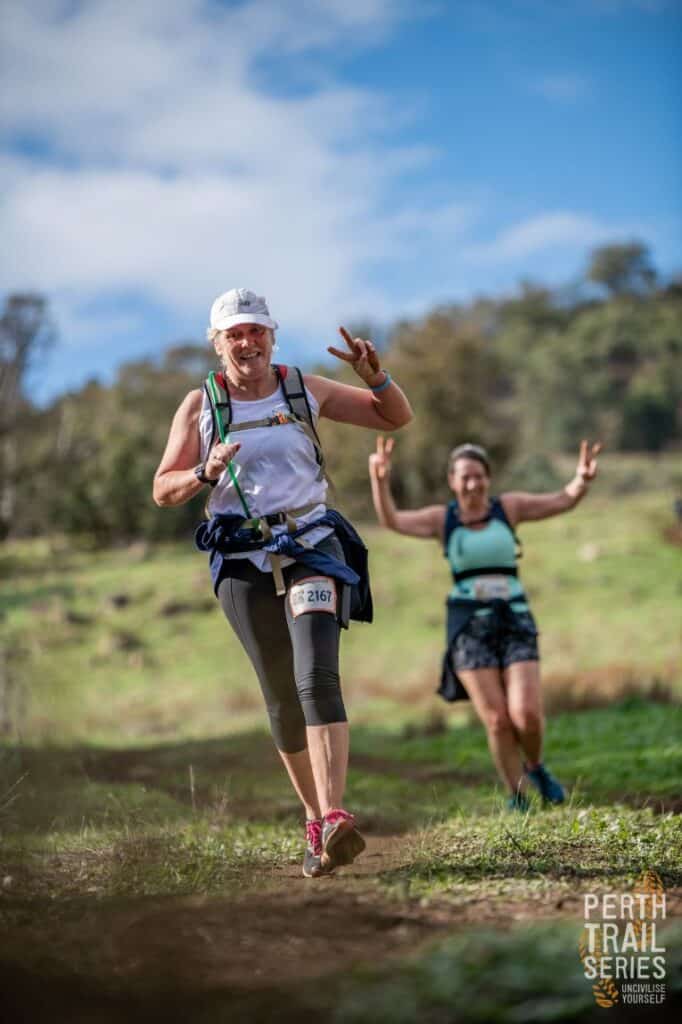Good news first or bad news first?
Do you feel like you’re getting slower as you get older?
There’s perfectly good reason for that (the bad news), but that’s not to say that it’s time to stop running (the good news).
The physiological changes we face with age can prove to be mentally challenging, after all, it’s natural to feel deflated or frustrated when you’re putting in the work but you’re not getting the results.
If you can relate to this, it’s time to switch it up and get on the trails.
What happens as we age (the bad news)?
- Our calf musculature decreases. Our calves are our largest contributor to our propulsive ground reaction force. Meaning, with a decrease in calf strength our stride length decreases.
- Not only do we lose muscular qualities, but also tendon qualities. With age our leg stiffness decreases. Leg stiffness is a desirable state for runners because it is responsible for storing and releasing energy efficiently, just like a spring. Our natural spring, the Achilles tendon, loses its stiffness/spring.
- There is a neural component to the amount of force that our muscles can generate, the status of our nervous system can also play a role with the neural drive.
- VO2 Max decreases, which is the key driver in reduced running velocity.
- Older runners are more prone to soft tissue injuries (muscle and tendon) such as tendinopathy’s, plantar fasciitis, and calf strains.
Benefits of choosing to continue to run as you get older (the good news)!
- Recreational runners have a lower risk of knee osteoarthritis than their sedentary counterparts.
- Overall, exercise reduces inflammation and reduces the risk of cardiovascular disease and other metabolic issues that can occur with age.
- If you run, you can then walk (or do other activities) at a lower metabolic cost, meaning it doesn’t take as much energy to walk at a normal speed. Walking speed is an indicator of longevity, the faster you walk. the more likely you’ll live longer.
- Your body mass will consist of better musculoskeletal qualities, including connective tissue qualities such as tendon strength and elasticity.
- Articular cartilage requires systemic or rhythmic loading for nutrition. Repeated and fluctuating stresses known as cyclic loading (such as running) stimulates nutrition from the joint to the articular cartilage, keeping it healthy.
So why swap to trail running?
Trail running removes the measurable performance outcomes that we would typically use in road, track or park run. The changing terrain and often unique distances require a whole new mindset, not to mention the medicinal qualities of being in nature.
Now you can reap all the benefits of training and running/racing in events without measuring you against your 20-year-old self!
You can continue to nurture your desirable properties by including the following in your training routine:
- Hill repeats
- Sprint training/Speed work
- Strength training, including Weight training, Pilates, Plyometrics with attention to coordination and proprioception.
- Recovery
Scarlett Duncan | DOSE Running
BSc Preventive Health Specialising in Exercise and Sport Science
Athletics Australia Qualified
Certified Pilates Instructor
Ultramarathoner & Passionate Coach



